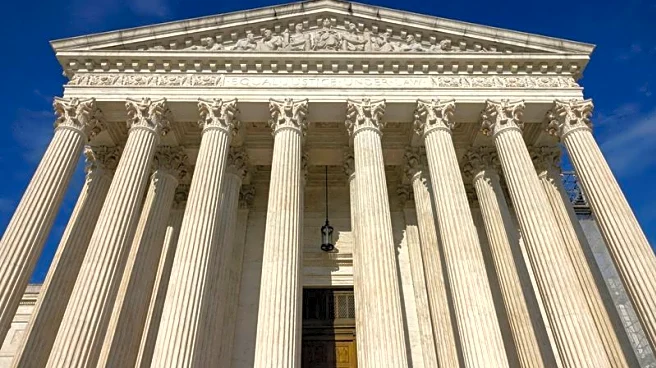What's Happening?
Recent appellate court decisions have limited the National Labor Relations Board's (NLRB) authority to award expanded remedies beyond traditional equitable relief. Historically, the NLRB provided remedies such
as reinstatement and back pay for employees affected by violations of the National Labor Relations Act (NLRA). However, in 2022, the NLRB under the Biden administration expanded its scope to include compensation for direct or foreseeable pecuniary harms, such as credit card interest and legal fees. This expansion was challenged in recent rulings by the Fifth and Sixth Circuit Courts of Appeals. The Fifth Circuit, in Hiran Management v. NLRB, and the Sixth Circuit, in NLRB v. Starbucks, both concluded that the NLRB exceeded its statutory authority by awarding broad consequential damages. These decisions align with a previous Third Circuit ruling but conflict with a Ninth Circuit decision that upheld the NLRB's expanded remedial authority.
Why It's Important?
The recent court decisions have significant implications for labor relations and employer-employee disputes in the U.S. By limiting the NLRB's ability to award expanded remedies, these rulings could affect the outcomes of future labor disputes, potentially reducing the financial liabilities for employers. The decisions highlight a growing circuit split, which may lead to further legal challenges and possibly a Supreme Court review to resolve the discrepancies. Employers involved in NLRB cases may now have stronger grounds to contest expanded damages, impacting how labor laws are enforced and interpreted across different jurisdictions.
What's Next?
The circuit split suggests that the issue of the NLRB's remedial authority may eventually be addressed by the U.S. Supreme Court. Additionally, the NLRB's ability to function is currently limited due to a lack of quorum, which may delay further decisions until new members are appointed. Employers and legal practitioners should monitor developments closely, as future rulings or legislative changes could alter the current legal landscape. The potential for a Supreme Court decision or a change in NLRB composition could significantly impact labor law enforcement and employer strategies in handling labor disputes.












